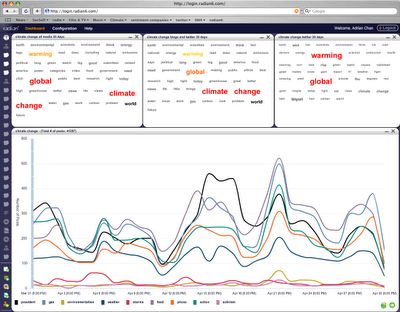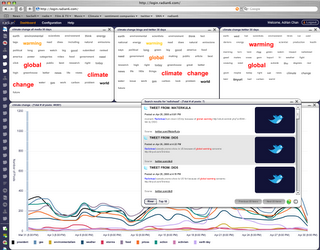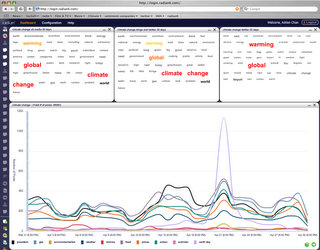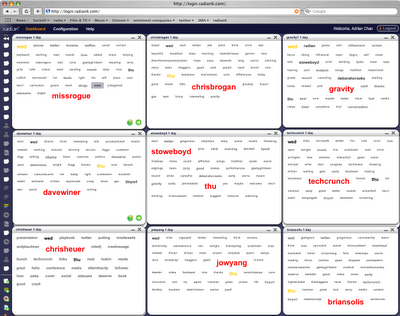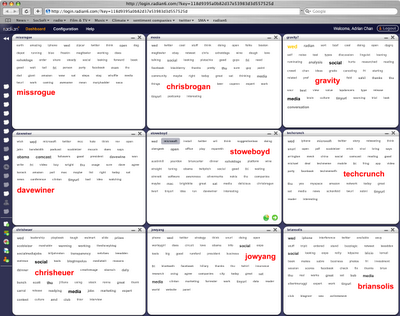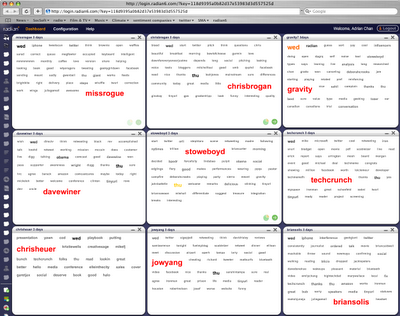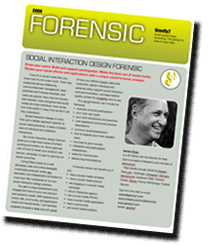At risk of overburdening the better angels of our nature with the heavy load of worn laundry, however, I'll cut out the preamble and let old Uncle Abe be.
All words are equal but some are more equal than others.
A philosophical moment here, then, on social and conversational media , on what we do with them and how analytical tools can make sense of them. And on the differences in both Kinds of Talk and the markets that are moved by them.
Strategic talk: this kind of talk wants to move the recipient, the listener, the audience, and without sincere concern for what s/he/t/hey *think*, produce a response or action.
Communicative talk: this kind of talk wants to maintain a relationship, create and build understanding, if not agreement. And even if it fails to produce consensus or peace, at least bridge differences and create some common ground upon which might grow a common wealth.
Professional and business needs and interests: are PR, marketing, advertising, branding, sales, and so on, and have an interest in distributing their message as well as in tracking audience follow through.
End users: more often than not, simply want to use the tools without hassle from the salesforce, for the purpose of coordinating daily realities and building and enjoying friendships online
Problem: Arriving at what is the unit of meaning that matters.
Solution: Varies by the profession, business interest, in other words the beholder in whose eyes value takes recognizable shape.
Current conversation and social media analytics still focus on words. Words can be searched. Sentiments cannot be searched. Opinions cannot be searched. Friendships cannot be searched. Influence cannot be searched. And attention cannot be searched. Yet.
Words look the same because the medium flattens speech into text, eliminates genre, idiom, style, and relationship from the form of writing analyzed.
In the case of speech, the utterance, utterer, and meaning uttered do not coincide: what a person says, and means in saying it, offer two distinct acts, and the listener can watch the person talking, or take what he says at "its word." But the speaker is not present for the production of meaning online, and only the words remain. Context, stylistics, intent, and so on can now only be inferred.
Words. We search them and from the results, try to obtain narrative, message, opinion, recommendation, review, conversation, even relationship, expertise, and psychology. We find the patterns we can see, and miss those we do not yet know how to map or model. The use of conversational and social analytics across social media is still focused on words, and the patterns we use rely on a coincidence of word use across all forms of online writing and talk. What we see is often what we want to see, what we can do is what we can think of doing.
The needs of PR
PR is about articulating messages that both define facts and seek to shape opinions. It's a form of impression management in which the burden is placed on the messaging to present the best face, the most appealing story, with the least controversy, and yet in a voice of measured integrity and with as much corporate sincerity as possible.
PR is an art -- the art of practicing strategy and executing tactically in forms that border on the personal. The press release is not so much a statement issued by a company as it is a statement already written about the company. Produced by an inside or outside department or agency, it takes the public's position on the company. This alone makes it interesting, for in taking the position of the consumer, outsider, market or what have you, the press release is highly suggestive: "here's what we would like you to think about us, in words you might find easy to pass along or quote" -- the release heads off controversy and anticipates challenges to the extent that it can, and is already a first cycle in spin.
I say this without judgment -- PR is an interesting form of discourse, and not a simple one. It requires a certain amount of knowledge not only of the company being written about, but about the audience being written to. PR is useless if it doesn't fly. But PR is even more valuable if it is picked up by end users, consumers, and so on, and passed along that way. There's no competing with the power of a message voiced in the first person consumer.
Some of the ways in which PR can benefit from social media and conversation tools like twitter would include:
distribution: how far has the message been distributed?
influencers: by whom?
pickup: with what kind of impact and pickup?
citations: where has it been cited/linked to?
On message quotes: where do we see direct citations, and by whom?
Off message quotes: where do we see topical citations, but reworded (and why? for credibility? or as a challenge to our message?)
Speed and acceleration: how quickly does our message get out? is it rapidly reported and then tails off, or does it accelerate? can we map that distribution path?
Tracking PR through social media:
- track messaging
- track mentions
- track links
- track circulation
- track comments and commentaries
- track reactions (sentiments)
- track influencers
- track social media pickup
The needs of branding
- track impressions
- track sentiment
- track propagation
- track social media mentions
- track authentic speech for phrases, expressions
- track markets for affinity groups
The needs of market research
- track competition
- track trends
- track culture
- track society
- track mass media hits
- track social media cultures
The needs of sales
- track sales
- track seo
- track propagation
- track clickthroughs
- track interest
- track social media links, feed, profile page mentions
- track competition
- track reviews
- track recommendations
- track ratings
The needs of event promotion
- track word of mouth
- track reach
- track influence
- track trends
- track anticipation
- track sentiment
- track buzz
- track social graph adoption and pickup
- track changes over time as event nears
Labels: attention, conversation, influence, social analytics, social marketing
